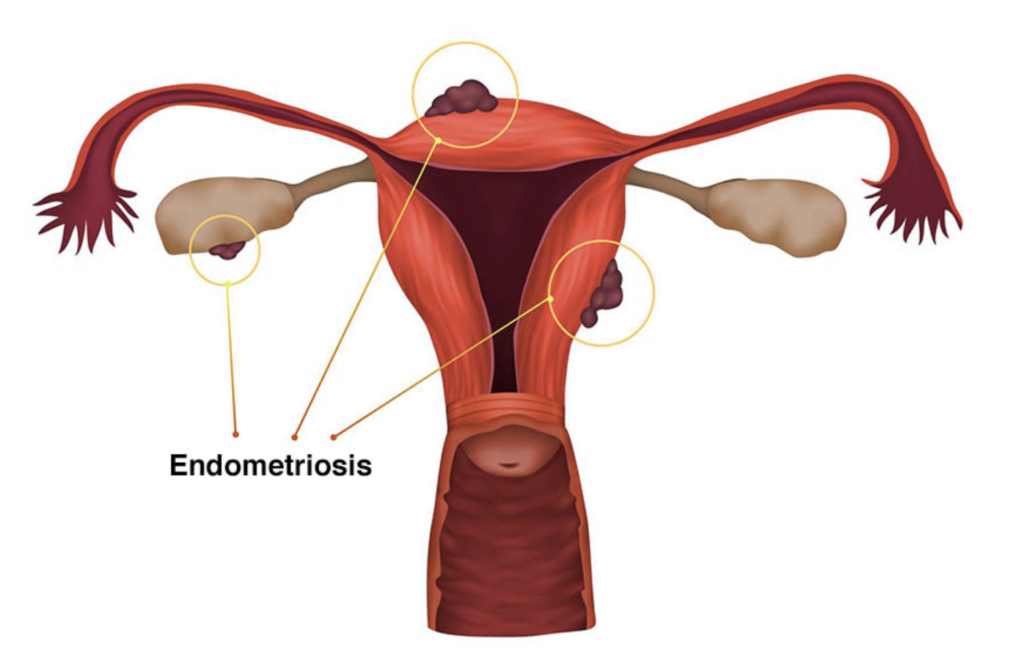Definition of Endometriosis
Endometriosis is a disorder in which tissue similar to the tissue that lines the inside of the uterus, the endometrium, grows and is found outside of the uterus. Each monthly cycle, this tissue responds and results in inflammation. Endometriosis is commonly found on the ovaries, fallopian tubes and tissue lining the pelvis. In more severe cases it can spread beyond the pelvic organs to ligaments, the bladder, liver, diaphragm, intestines, rectum and all of the space in between.

What is an Endometrioma
An endometrioma is a cyst that is formed when the endometrial tissue grows inside the ovaries. Also known as an ovarian endometrioma, endometrioid cyst or chocolate cyst.
Symptoms of Endometriosis
Endometriosis shows itself in many different ways. Classic signs are heavy, painful periods (dysmenorrhea). Spotting before and after your period, for days. Bleeding between periods (intermenstrual bleeding). Painful intercourse, bowel movements or urination. Infertility, fatigue, diarrhea, constipation, bloating and nausea.
The 4 stages of Endometriosis
Stage I – Minimal – Few superficial implants found on the membrane lining the abdomen (peritoneum).
Stage II – Mild – Endometrial tissue found in the ovaries (endometriomas) with more and deeper implants.
Stage III – Moderate – Many deep implants, small cysts on one or both ovaries, presence of adhesions found within rogans in the pelvic cavity (ovaries, rectum uterus).
Stage IV – Severe – Many deep implants, large cysts on one or both ovaries, many dense adhesions found within and outside the pelvic cavity (bowels, appendix, diaphragm, heart, lungs and even brain).
References
Curly Broccoli does not contain medical advice. The contents of this blog, such as text, graphics, images and other material are intended for informational and educational purposes only and not for the purpose of rendering medical advice. The contents of this blog are not intended to substitute for professional medical advice, diagnosis or treatment.
Please consult your physician for personalized medical advice. Always seek the advice of a physician or other qualified healthcare provider with any questions regarding a medical condition.
